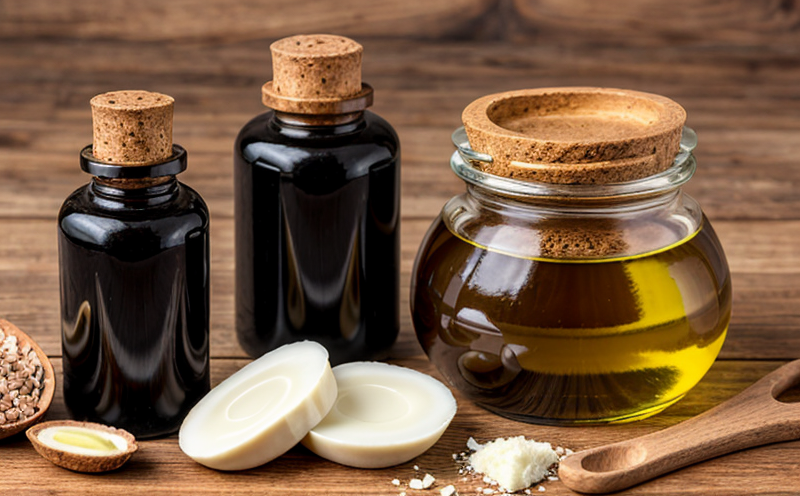Codex STAN 19 Butter and Fat Quality Testing
The Codex STAN 19 standard provides a comprehensive framework for assessing the quality of butter and fat. This standard is crucial in ensuring that products meet international food safety, hygiene, and quality standards, thereby protecting consumer health and fostering fair trade practices.
Quality managers and compliance officers rely on this standard to ensure their products comply with international regulations. R&D engineers use it as a benchmark for developing new formulations while maintaining the highest standards of quality. Procurement teams also leverage Codex STAN 19 to verify that suppliers meet the required specifications, ensuring product consistency.
Butter and fat are essential components in various food products ranging from dairy goods to margarines. Ensuring their quality is paramount for manufacturers to avoid recall events and maintain a good reputation. The standard covers several key parameters including moisture content, fat content, color, flavor, texture, and microbiological safety.
The Codex STAN 19 process begins with the collection of samples which must be representative and free from contamination. Preparing these samples correctly is critical to obtaining accurate test results. Once collected, the samples undergo a series of tests that are detailed in the standard. These include physical testing such as color measurement using spectrophotometry, texture analysis through rheological methods, and sensory evaluation by trained panelists.
Microbiological tests are also conducted to ensure the absence of harmful pathogens. Fat content is determined via gravimetric or volumetric methods while moisture content can be measured using Karl Fischer titration. These tests provide detailed insights into the product’s composition and purity.
The results from these analyses play a vital role in ensuring that products meet Codex STAN 19 requirements. They also serve as valuable data for continuous improvement initiatives within R&D departments. Compliance officers can use this information to refine production processes, while procurement teams can select suppliers who consistently deliver quality products.
In summary, Codex STAN 19 is a robust tool that underpins the global food industry's commitment to delivering safe, high-quality butter and fat products. Its implementation ensures consistent performance across different geographical locations and helps maintain consumer trust in these essential ingredients.
Applied Standards
| Standard Code | Description |
|---|---|
| Codex STAN 19-1985 | General Principles for the Production, Processing and Labelling of Butter |
| Codex STAN 19:2004 | General Principles for the Production, Processing and Labelling of Fats and Oils |
The Codex STAN 19-1985 standard outlines general principles for the production, processing, and labeling of butter. This includes guidelines on raw material selection, processing techniques, and final product packaging. The standard also covers quality control measures to ensure consistent butter quality across different manufacturers.
On the other hand, Codex STAN 19:2004 provides similar guidance for fats and oils but focuses more specifically on these products. It includes detailed specifications regarding extraction processes, refining steps, and final product specifications. Both standards are integral to maintaining the integrity of butter and fat products.
Scope and Methodology
| Test Parameter | Description |
|---|---|
| Moisture Content | Determined using Karl Fischer titration. This method involves precise measurements to ensure accurate results. |
| Fat Content | Measured gravimetrically or volumetrically depending on the sample type and expected fat content. |
| Color | Assessed using a spectrophotometer. This provides quantitative data about the color characteristics of the product. |
| Flavor | Evaluated by trained sensory panels who assess attributes like aroma, taste, and mouthfeel. |
| Texture | Evaluated using rheological methods. This includes measuring viscosity, yield point, and other physical properties. |
| Microbiological Safety | Conducted through culture-based and PCR-based techniques to detect potential pathogens. |
The testing process starts with sample preparation. Samples must be representative of the product being tested, free from contamination, and suitable for analysis. Once prepared, samples are subjected to a series of tests that are outlined in Codex STAN 19:2004.
Moisture content is determined using Karl Fischer titration which involves measuring the amount of water present in the sample. Fat content can be measured either gravimetrically or volumetrically depending on the expected fat content and sample type. Color assessment utilizes a spectrophotometer to provide quantitative data about the product's color characteristics.
Flavor evaluation is conducted by trained sensory panels who assess attributes such as aroma, taste, and mouthfeel. Texture evaluation uses rheological methods which measure physical properties like viscosity, yield point, and elasticity. Microbiological safety tests are carried out using culture-based and PCR-based techniques to detect potential pathogens.
The results from these analyses provide detailed insights into the product's composition and purity. They also serve as valuable data for continuous improvement initiatives within R&D departments. Compliance officers can use this information to refine production processes, while procurement teams can select suppliers who consistently deliver quality products.
Eurolab Advantages
Eurolab offers a range of advantages when it comes to Codex STAN 19 Butter and Fat Quality Testing. Our state-of-the-art facilities are equipped with the latest instrumentation, ensuring accurate and reliable results.
We employ highly qualified professionals who have extensive experience in this field. Their expertise allows us to provide precise and detailed reports that meet international standards. In addition, our laboratories are accredited by leading accreditation bodies worldwide, guaranteeing the highest level of quality assurance.
Our team provides comprehensive support from sample preparation through to final report generation. This includes providing technical advice on how best to prepare samples for analysis, ensuring they are representative and free from contamination. We also offer interpretation services that help clients understand their test results in context with Codex STAN 19 requirements.
Moreover, we maintain strong relationships with leading suppliers of reagents and equipment used in these tests. This ensures that our clients receive the most up-to-date and accurate testing solutions available on the market today.
In summary, Eurolab's commitment to excellence makes us your ideal partner for all your Codex STAN 19 Butter and Fat Quality Testing needs.





